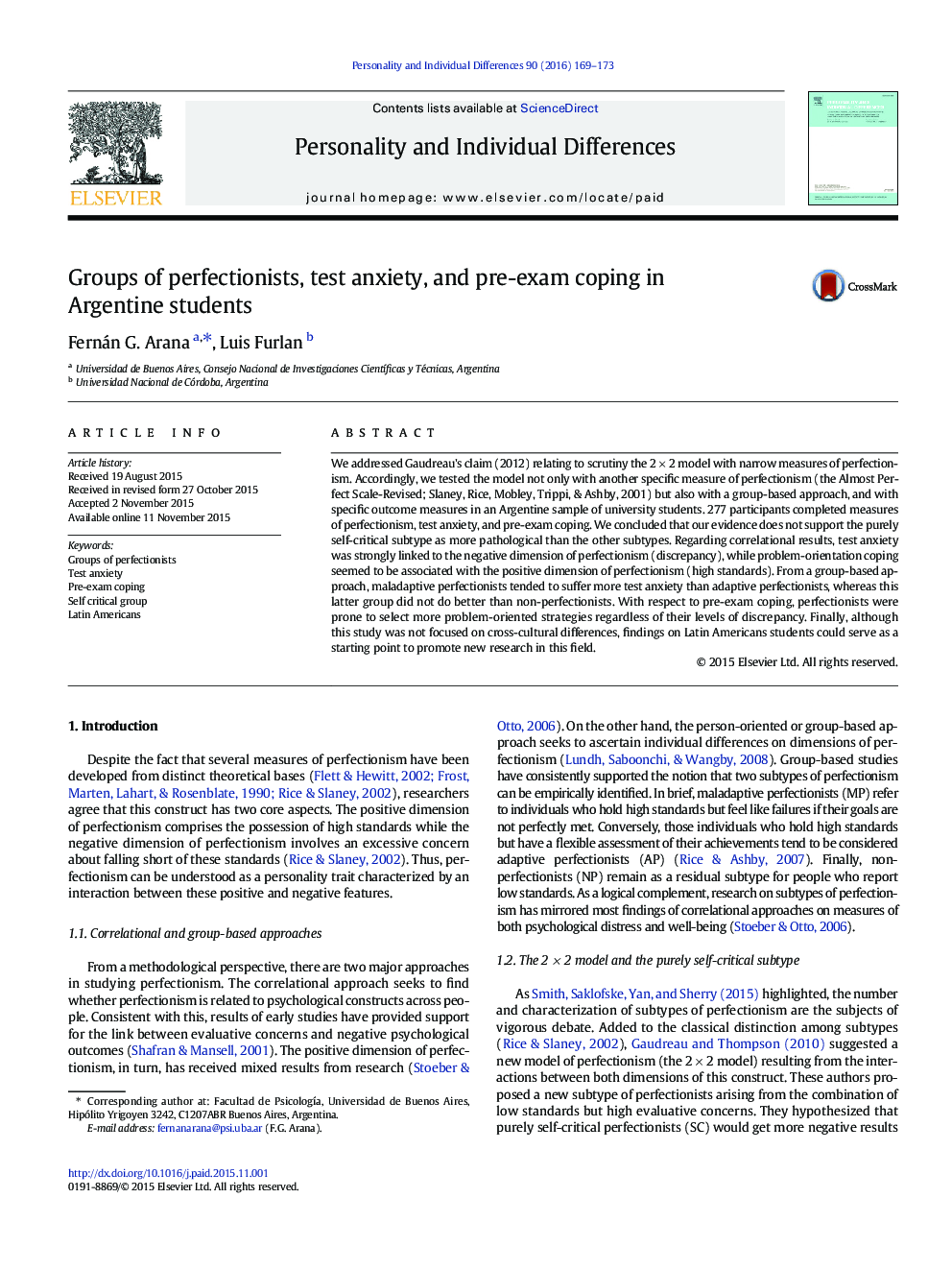| Article ID | Journal | Published Year | Pages | File Type |
|---|---|---|---|---|
| 889844 | Personality and Individual Differences | 2016 | 5 Pages |
•We tested the 2 × 2 model against the APS-R scale and a group-based approach.•277 Argentine students completed outcome measures of test anxiety and pre-exam coping.•Self-critical group failed to distinguish from maladaptive group on outcome measures.•Maladaptive perfectionists tended to suffer more test anxiety than adaptive perfectionists.•Perfectionists were prone to select problem-oriented strategies at pre-exam.
We addressed Gaudreau's claim (2012) relating to scrutiny the 2 × 2 model with narrow measures of perfectionism. Accordingly, we tested the model not only with another specific measure of perfectionism (the Almost Perfect Scale-Revised; Slaney, Rice, Mobley, Trippi, & Ashby, 2001) but also with a group-based approach, and with specific outcome measures in an Argentine sample of university students. 277 participants completed measures of perfectionism, test anxiety, and pre-exam coping. We concluded that our evidence does not support the purely self-critical subtype as more pathological than the other subtypes. Regarding correlational results, test anxiety was strongly linked to the negative dimension of perfectionism (discrepancy), while problem-orientation coping seemed to be associated with the positive dimension of perfectionism (high standards). From a group-based approach, maladaptive perfectionists tended to suffer more test anxiety than adaptive perfectionists, whereas this latter group did not do better than non-perfectionists. With respect to pre-exam coping, perfectionists were prone to select more problem-oriented strategies regardless of their levels of discrepancy. Finally, although this study was not focused on cross-cultural differences, findings on Latin Americans students could serve as a starting point to promote new research in this field.
